Key Takeaways
The restaurant business is cut-throat, and attracting and retaining customers can be overwhelming, especially when you're facing fierce competition and rapidly evolving customer expectations. If you're feeling anxious about where to invest your limited marketing budget or losing sleep over how to sustainably grow your revenue, you're not alone.
Restaurant digital marketing encompasses all online strategies used to promote your restaurant and engage with customers online, aiming to increase visibility, attract new customers, and boost sales. In today's digital-first world, having a comprehensive marketing strategy isn't just nice to have—it's essential for survival and growth. To learn more about the importance of digital marketing for restaurants, and how it can help your business thrive.
The profusion of various digital platforms requires brands to evaluate their digital marketing tactics and build a solid plan to position their business for success. The truth many restaurant owners can't ignore is that digital marketing is critical to restaurant survival and growth in 2025. For more insights on why restaurant marketing is needed now more than ever, and how to make the most of it.
The idea is to be present everywhere your customers are. Whether you're communicating through social media channels, emailing personalized promotions, revisiting your organic SEO, or redesigning your website to improve customer experience, the first step is to understand your audience, their needs, and preferences. The better you know your audience, the more effectively you'll be able to create a marketing plan that sets you up for long-term growth. Understanding what drives hungry customers and how to attract them is key to a successful restaurant marketing strategy.
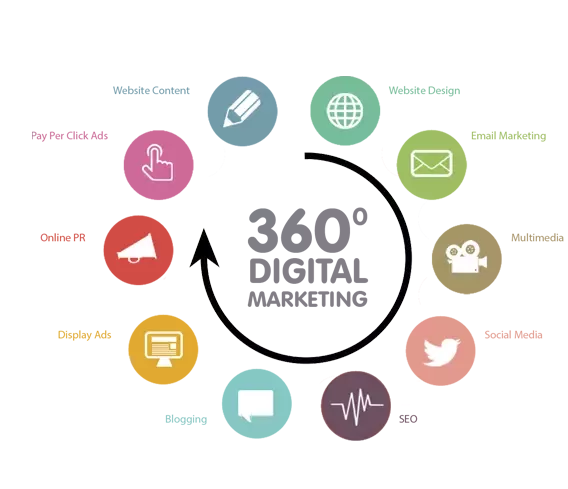
Once the foundation is laid, a 360-degree digital marketing approach creates, develops, and implements integrated strategies, where everything is connected and measured for ROI. To maximize your ROI, it's essential to have a well-planned restaurant marketing budget that allocates resources effectively across different channels.
Understanding Your Restaurant Brand
Before diving into specific marketing tactics, it's crucial to clearly define your restaurant's brand identity. Your brand is more than just a logo or color scheme—it's the entire experience you create for your customers, from your food quality and menu design to your service style and restaurant ambiance.
Start by asking yourself these fundamental questions:
- What makes your restaurant unique?
- What values does your restaurant stand for?
- Who is your ideal customer?
- What experience do you want to create for your diners?
Once you've defined your brand identity, set SMART (Specific, Measurable, Achievable, Relevant, Time-bound) goals for your digital marketing efforts. For example, rather than simply aiming to "increase online orders," set a specific goal like "increase online orders by 25% within six months through our restaurant online ordering system."
Your brand identity should be consistently reflected across all digital marketing channels, creating a cohesive experience that builds recognition and trust with your customers. For tips on how to put your business on the map with effective marketing tactics, consider exploring strategies that highlight your unique brand story.
Website Design & Content: Creating a Seamless Ordering Experience
Let's begin with the basics. If you have a website that your customers use to place their food orders, it's essential to ensure that the UI/UX (user interface/user experience) is user-friendly and easy to navigate. Your customers should never feel lost or frustrated while browsing your website.
94% cite design as a reason they don't bother ordering from certain restaurant websites. Only 6% of customers really care about the content.
From the color theme to fonts and placement of menu items, everything should be well thought out. Keep your customers at the center of your design and ensure they can place orders in as few steps as possible. The average time to find the menu, browse, and checkout should not exceed 10 minutes.
In terms of content, whatever you write about your brand will directly impact your customers' decision-making process. Focus on educating them about ingredients, packaging material (make sure it's eco-friendly), and hygiene practices. Talk about the experience of the chefs behind the counter to connect with your audience. Transparency helps build loyalty.
Quick Tips for Website Optimization
- Provide video introductions to help customers navigate the website and place orders
- Ensure your website is responsive across all devices (especially mobile)
- Provide multiple payment options
- Include high-quality food photography
- Make your menu easy to find and navigate
- Ensure fast loading times (under 3 seconds)
- Include clear calls-to-action for online ordering
Search Engine Optimization (SEO) & Local SEO
Did you know that 93% of online experiences begin with a simple online search?
By optimizing your website, you can help your restaurant appear higher in search results on popular search engines like Google. The higher you rank, the more likely people will find you, and the more you can grow. But SEO needs time investment. The sooner you start, the better it will be. Your optimization strategy can take about 3-6 months to show results, which is why it's better to build and execute your strategy while the website is in its design phase.
Launching a website with built-out meta titles and descriptions will ensure that you're already off to a good start.

General SEO Basics
SEO comprises the following elements:
- On-page SEO: Find ideal keywords for your restaurant and create content targeted at those keywords. Get your website listed on as many review sites as possible.
- On-page Technical SEO: Structure your website for optimization to help crawlers find and index your content effectively. Set up sitemaps, link the website to your social media profiles, and ensure that your site is SSL-certified.
- Off-page SEO: Acquire links from external websites that point to your website to build authority.
To start, every page on your website should have a title tag, meta descriptions, and keywords. For example, if you run an Asian restaurant, keywords like "Authentic Asian restaurant" or "local Asian cuisine" should be included in all three elements of your meta tags. Just don't overuse keywords.
Local SEO for Restaurants
For restaurants, local SEO is particularly important as most of your customers will be searching for dining options in their immediate vicinity. Here's how to optimize for local searches:
- Google Business Profile: Claim and optimize your Google Business Profile (formerly Google My Business) with accurate information, high-quality photos, updated hours, and your menu.
- Local Keywords: Include location-based keywords throughout your website (e.g., "best pizza in Downtown Chicago").
- NAP Consistency: Ensure your Name, Address, and Phone number are consistent across all online platforms.
- Local Citations: Get listed in local directories and restaurant-specific platforms like Yelp, TripAdvisor, and OpenTable.
- Local Content: Create content about local events, community involvement, or partnerships with local suppliers.
Quick Tips for SEO
- Do not execute too many techniques at once. It only harms the website's rank
- Enhance your contact page with complete information
- Start writing blogs on your website and share them across all social channels
- Include local terms to show up in local area search results
- Optimize for mobile users, as many local searches happen on mobile devices
Pay-Per-Click (PPC) Advertising & Search Engine Marketing (SEM)
On average, the top 3 paid ad spots on Google Search Page get 41% of clicks.

An increasing number of people are asking Google or Siri for dining suggestions. PPC can help you show up at the top of the page when local, hungry people type phrases like "Restaurants near me", "Asian Restaurant in Denver", etc. The majority of these customers don't click past the first page of results. Thus, PPC marketing or advertising is your best bet if you wish to beat the competition having a higher organic ranking.
All you have to do is bid for the right set of keywords, and because you only pay for actual clicks, the financial risk can be monitored and controlled according to your budget.
Diverse PPC Platforms for Restaurants
While Google Ads is the most popular PPC platform, restaurants can benefit from a multi-platform approach:
- Google Ads: Target specific keywords related to your restaurant and cuisine
- Facebook & Instagram Ads: Use highly visual ads to showcase your food and target specific demographics
- Local Ad Networks: Consider advertising on local news sites or food blogs
- Yelp Ads: Appear at the top of Yelp search results for relevant queries
In order to target the right keywords, you can use keyword tools like Google Adwords and/or Ubersuggest. These websites provide tools that suggest a list of keywords based on the phrases, categories, or cuisine relevant to your restaurant.
Quick Tips for PPC Marketing
- Include click-to-call features to make your campaign more effective
- Optimize for mobile viewing
- Include location-based keywords
- Analyze and monitor your clicks and conversions on a daily basis
- Use ad extensions to display additional information like your address, phone number, and links to specific pages
- Create ads that highlight your unique selling propositions (e.g., "Commission-free online ordering")
Social Media Marketing and Online PR
For a restaurant business, marketers who use Instagram generate twice as many leads as those who don't.
The evolution of social media and online reviews allows people to spread the word (positive or negative) about your restaurant. These have become important marketing channels for all sorts of businesses, both online and offline. Your customers are using social media to seek recommendations and share their experiences. They love to buzz about what's new and trending. A spot-on social media and online PR strategy can put your restaurant on the map.
The goals are simple: Create your own voice and let the world know that you exist!
Building an Effective Social Media Presence
Start creating a buzz through local media outlets as early as possible and encourage your customers to share their experiences on social media. The key to success is to always be engaged with your audience. Getting an immediate response to their reviews, a double tap on their Instagram feed, or a retweet can encourage patrons to sing your praises.
Recognize your regular customers and show them love with personalized deals (e.g., "get a free drink with your next meal!") to ensure that they keep coming back and recommending you. In other words, focus on levels of engagement rather than the size of the audience.
While keeping your customers engaged, don't forget to take and post beautiful photos of your dishes. Visual content is easy to absorb and sells effectively. Great photos whet the appetite!
Social Media Contests & Engagement Strategies

Take your social media presence to the next level with these engagement strategies:
- User-Generated Content: Encourage customers to share photos of their meals with a branded hashtag
- Contests and Giveaways: Run "tag a friend" contests or photo competitions with meal vouchers as prizes
- Behind-the-Scenes Content: Share kitchen preparations, chef interviews, or ingredient sourcing stories
- Interactive Polls: Ask followers about menu preferences or new dish ideas
- Limited-Time Offers: Create urgency with special deals announced exclusively on social media
For more detailed guidance, check out our Social Media Marketing Tips for restaurants.
Quick Tips for Social Media Marketing
- Host social media contests to build relationships with your customers
- Monitor your online reputation
- Use Facebook and Instagram ads for targeted marketing
- Gather customer feedback and respond to each review, even negative ones, to show commitment to service
- Share links to PR coverage on your website and social channels
- Maintain a consistent posting schedule
- Use high-quality images and videos
Email & SMS Marketing: Engaging Your Customers
The ROI of email marketing is 28.5% better than for direct mail
Often targeting a "warm audience" (people who have self-identified as interested in your promotions), email marketing tends to give 28.5% better ROI than any other form of advertisement. The key to effective email marketing is "segmentation" and "personalization".
Building Your Email Marketing Strategy
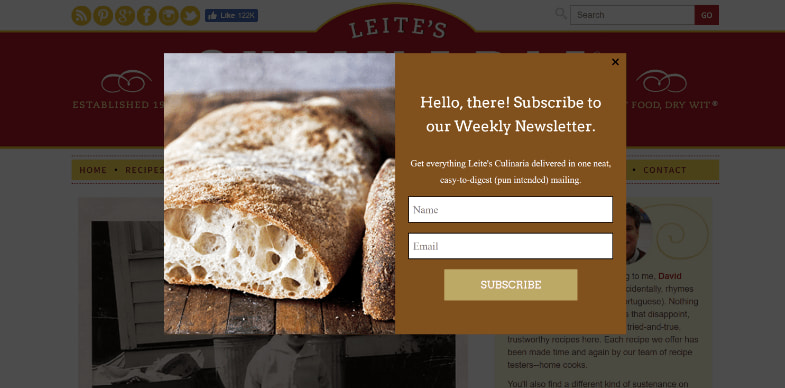
The first thing you should do is build a mailing list. For online subscribers, you can use an opt-in form or place the "I agree to receive promotional emails" checkbox right on the website. You'll also need to consider offline marketing to get email addresses of people who dine in at your restaurant. To do so, you could run a lucky draw and ask people to participate by leaving their contact details and opting into your restaurant marketing emails.
The success of email marketing campaigns depends significantly on the subject line of the email. You'll need to nail the email subject line to get people to open your emails. For example: "Dinner is covered: $15 off if you order in the next 24 hours"
Check out our Email Marketing Resources for more actionable tips.
SMS Marketing for Immediate Engagement
While email marketing is powerful, SMS marketing provides immediate engagement with open rates as high as 98%. Consider implementing SMS marketing for:
- Time-sensitive promotions
- Reservation confirmations and reminders
- Order status updates
- Birthday or anniversary special offers
- Flash sales or limited-time menu items
Always ensure customers have explicitly opted in to receive SMS messages and provide clear instructions for opting out.
Quick Tips for Email & SMS Marketing
- Combine social media and email marketing to increase sign-ups
- Send personalized newsletters with the customer's name
- Make your newsletters engaging and relevant to your audience
- Explain the benefits of signing up for email communications with your restaurant
- Segment your email list based on customer behavior and preferences
- Keep SMS messages concise and include a clear call-to-action
Online Ordering & Delivery Platforms Integration
In today's digital-first world, online ordering is no longer optional for restaurants—it's essential. Customers expect the convenience of ordering food with just a few taps on their smartphones or clicks on their computers.
Commission-Free vs. Third-Party Delivery Platforms
Restaurants typically have two main options for online ordering:
- Third-Party Delivery Platforms: Services like Grubhub, DoorDash, and Uber Eats offer wide reach but charge commissions ranging from 15-30% per order.
- Commission-Free Online Ordering Systems: Platforms like Restolabs allow restaurants to accept orders directly through their own website without paying per-order commissions.
While third-party platforms offer immediate access to their user base, they can significantly eat into your profit margins. A balanced approach often works best—use third-party platforms for customer acquisition while encouraging repeat customers to order directly through your website or app.
Optimizing Your Online Ordering Experience
Regardless of which platforms you use, focus on creating a seamless ordering experience:
- Ensure your menu is easy to navigate with clear categories and descriptions
- Include high-quality photos of menu items
- Make customization options clear and simple
- Streamline the checkout process
- Provide accurate delivery time estimates
- Implement order tracking when possible
- Consider partner integrations with your POS system for streamlined operations
By offering a superior online ordering experience, you can increase average order values and encourage customer loyalty.
Online Reviews & Reputation Management
In the restaurant industry, your online reputation can make or break your business. Studies show that 94% of diners choose restaurants based on online reviews, and a one-star increase on Yelp can lead to a 5-9% increase in revenue.
Monitoring and Managing Your Online Reputation
Start by claiming your business profiles on all major review platforms:
- Google Business Profile
- Yelp
- TripAdvisor
- OpenTable
Set up alerts to notify you when new reviews are posted so you can respond promptly. Responding to reviews—both positive and negative—shows that you value customer feedback and are committed to providing excellent service.
Handling Negative Reviews
When you receive a negative review:
- Respond promptly and professionally
- Thank the reviewer for their feedback
- Apologize for their negative experience
- Explain (without making excuses) what happened if appropriate
- Outline steps you're taking to address the issue
- Offer to make it right, potentially taking the conversation offline
Remember that how you handle criticism is often more important to potential customers than the negative review itself.
Encouraging Positive Reviews
Proactively encourage satisfied customers to leave reviews:
- Include review site links on receipts, menus, and table tents
- Train staff to politely ask happy customers to share their experience online
- Send follow-up emails after online orders with links to review sites
- Create a QR code that leads directly to your review profiles
Never offer incentives for positive reviews, as this violates most review platforms' terms of service and can damage your credibility.
Metrics, Analytics & Measuring ROI
To optimize your digital marketing efforts, you need to track key performance indicators (KPIs) and analyze the data to make informed decisions. Many restaurant owners feel overwhelmed by the technical aspects of analytics, but understanding a few key metrics can make a significant difference in your marketing effectiveness.
Essential Metrics for Restaurant Digital Marketing
Calculating ROI for Restaurant Marketing
To calculate the ROI of your marketing efforts, use this simple formula:
ROI = (Revenue Generated from Marketing - Marketing Cost) / Marketing Cost × 100%
For example, if you spend $1,000 on a social media campaign that generates $5,000 in sales:
ROI = ($5,000 - $1,000) / $1,000 × 100% = 400%
This means for every dollar spent on marketing, you generated $4 in profit.
Using Data to Optimize Your Marketing Strategy
Regularly review your analytics to identify:
- Which marketing channels drive the most traffic and conversions
- What content resonates most with your audience
- Which promotions generate the highest ROI
- When your customers are most active online
- How customer behavior changes seasonally
Use these insights to refine your marketing strategy, allocating more resources to high-performing channels and optimizing or eliminating underperforming initiatives.
Leveraging Commission-Free Online Ordering with Restolabs
As you implement your digital marketing strategy, it's crucial to have the right technology infrastructure to support your goals. One of the most significant challenges restaurants face is balancing the need for online ordering with the high costs of third-party delivery platforms.
Restolabs offers a powerful solution with our commission-free online ordering system designed specifically for restaurants looking to grow their direct online sales without sacrificing profit margins.
Benefits of Commission-Free Online Ordering
- Higher Profit Margins: Eliminate the 15-30% commission fees charged by third-party platforms
- Full Ownership of Customer Data: Build direct relationships with your customers and leverage their ordering history for targeted marketing
- Brand Control: Provide a consistent, branded ordering experience that reinforces your restaurant's identity
- Seamless Integrations: Connect with your existing POS, payment processors, and delivery services through our partner integrations
- Quick Setup: Get your online ordering system up and running within a day
By combining effective digital marketing strategies with a commission-free online ordering system, restaurants can create a sustainable growth model that maximizes both customer acquisition and retention while protecting profit margins.
Implementing Your Digital Marketing Strategy with Restolabs
Restolabs not only provides the technology infrastructure for online ordering but also supports your overall restaurant marketing strategies through:
- SEO-optimized ordering pages that improve your search visibility
- Social media integration for seamless sharing and promotion
- Email marketing capabilities to engage with your customer base
- Analytics and reporting to track performance and optimize your strategy
This integrated approach ensures that your marketing efforts directly translate to increased online orders and revenue growth.Book a Demo
Frequently Asked Questions
The most effective digital marketing strategies for restaurants in 2025 include a strong local SEO presence, engaging social media marketing with high-quality visual content, a user-friendly website with integrated online ordering, email and SMS marketing for customer retention, and strategic use of paid advertising. The key is creating an integrated approach where these channels work together to drive awareness, engagement, and conversions while collecting data to continuously optimize your strategy.
Increased visibility, better customer engagement, cost-effectiveness, improved targeting, and measurable results.
Yes, digital marketing is essential for restaurants to attract new customers, build brand awareness, and stay competitive.
Restaurants benefit from commission-free online ordering in several ways: significantly increased profit margins by eliminating the 15-30% fees charged by third-party platforms; complete ownership of valuable customer data for personalized marketing; direct relationship with customers for better loyalty building; brand control through a consistent ordering experience; and the ability to offer better pricing or promotions since you're not covering high commission costs. This approach helps restaurants build sustainable growth while maintaining control over their digital presence.
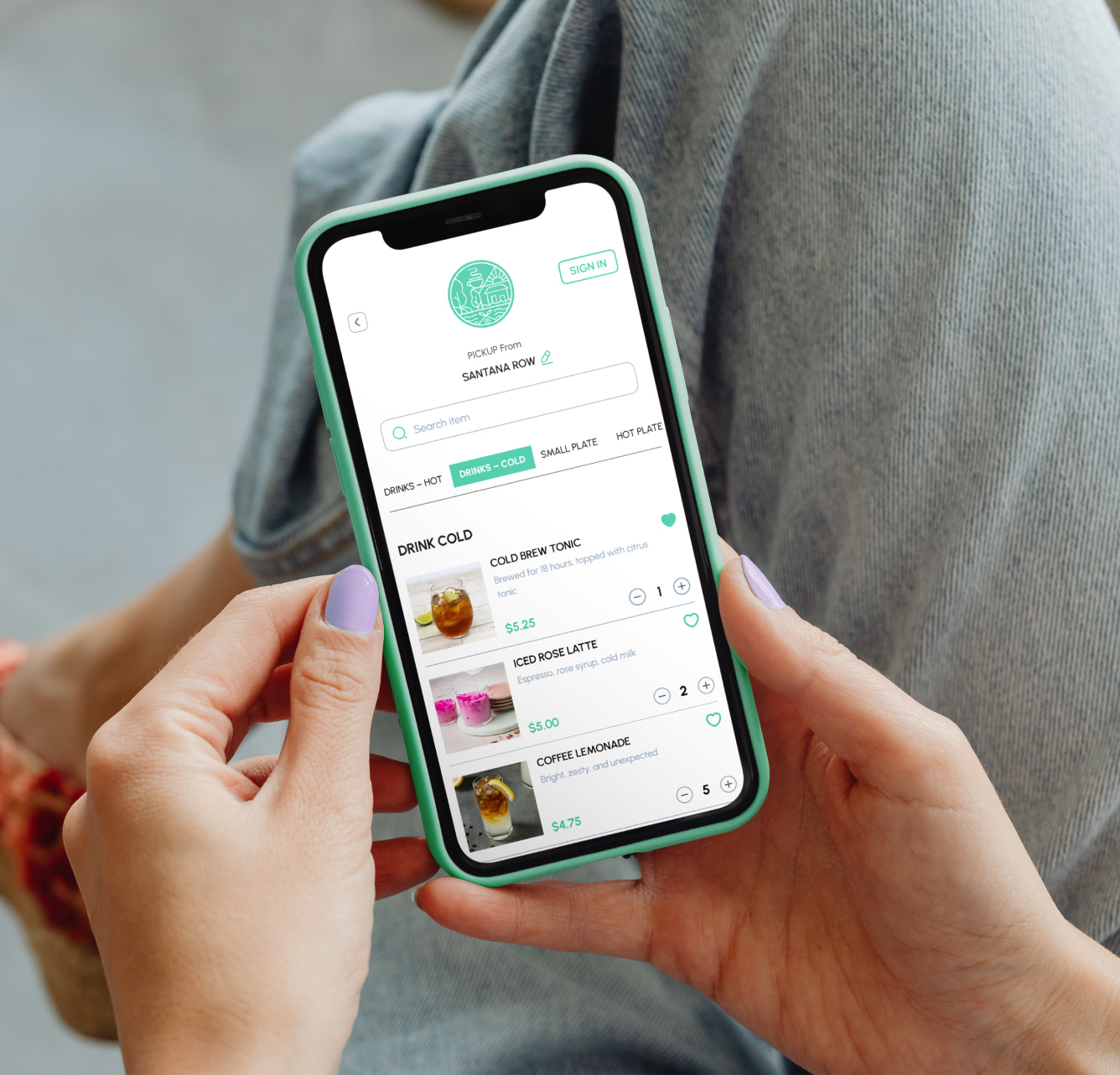

.gif)

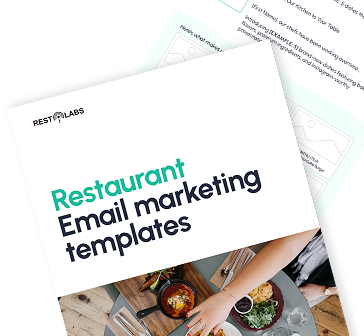

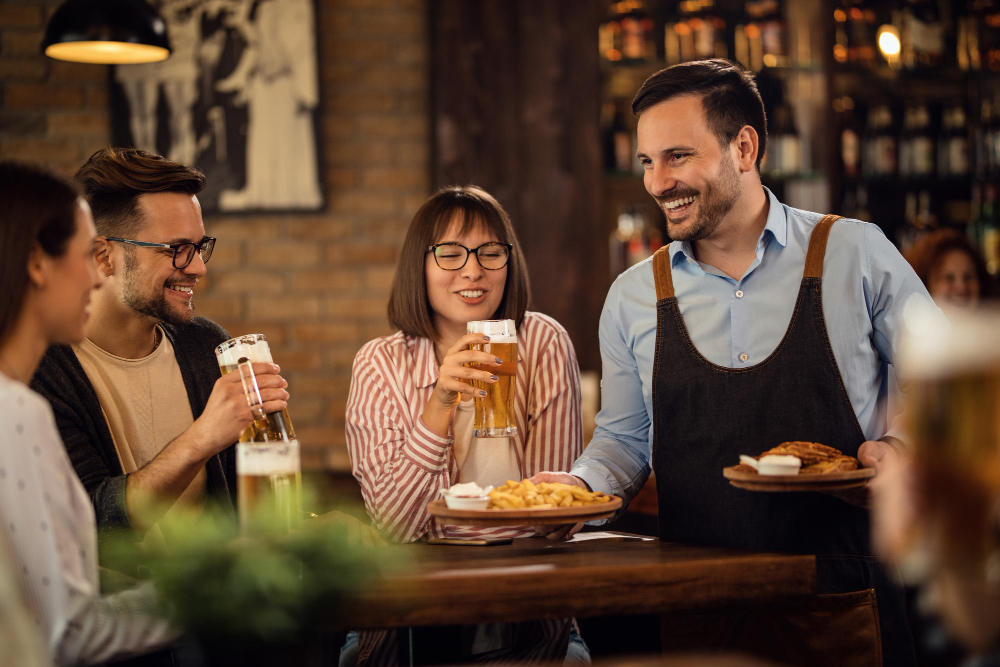
.png)




